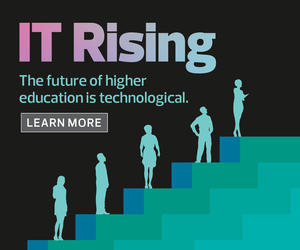After all, colleges face the same environmental extremes as their neighbors: flooding on the coast, intense heat and wildfires in California. These effects raise many questions for institutions, from the logistical (“Should we relocate the physical campus?”) to the financial (“How will enrollment, fundraising and insurance be affected?”).
As Bryan Alexander, a futurist, educator and writer, sees it, technology professionals have a unique relationship with climate change initiatives. Last October, Alexander discussed these challenges at the EDUCAUSE annual conference in a session titled “Climate Change, COVID-19, and the Next Generation of Higher Ed IT.”
“IT departments will be under enormous pressure as their institutions grapple with climate change,” Alexander has written.
Technology Can Help Colleges Analyze and Reduce Carbon Impact
Second Nature’s signatories are taking a variety of actions to reduce carbon emissions. So far, implementation of their climate action plans has saved a total of $230 million, according to the organization’s “2019–2020 Second Nature Impact Report.”
Bowdoin College in Maine achieved carbon neutrality through strategies such as converting buildings from oil to natural gas, installing energy-efficient LED lightbulbs and investing in solar energy. In Pennsylvania, Allegheny College uses only wind-generated electricity, operates a campus composting facility and has retrofitted buildings to increase energy efficiency.
As colleges pursue carbon reduction initiatives, technology is often part of the strategy, says Maxwell. That may mean submetering buildings to better account for energy consumption, piloting a campus microgrid that could be scaled to a municipality, or analyzing the effects of converting hardscape to a tree canopy.
“Technology is being used in a lot of really interesting ways on campus,” says Maxwell. “A lot of universities are using their own campuses as test beds to try out new technologies and new ways of modeling and implementing renewables.”











